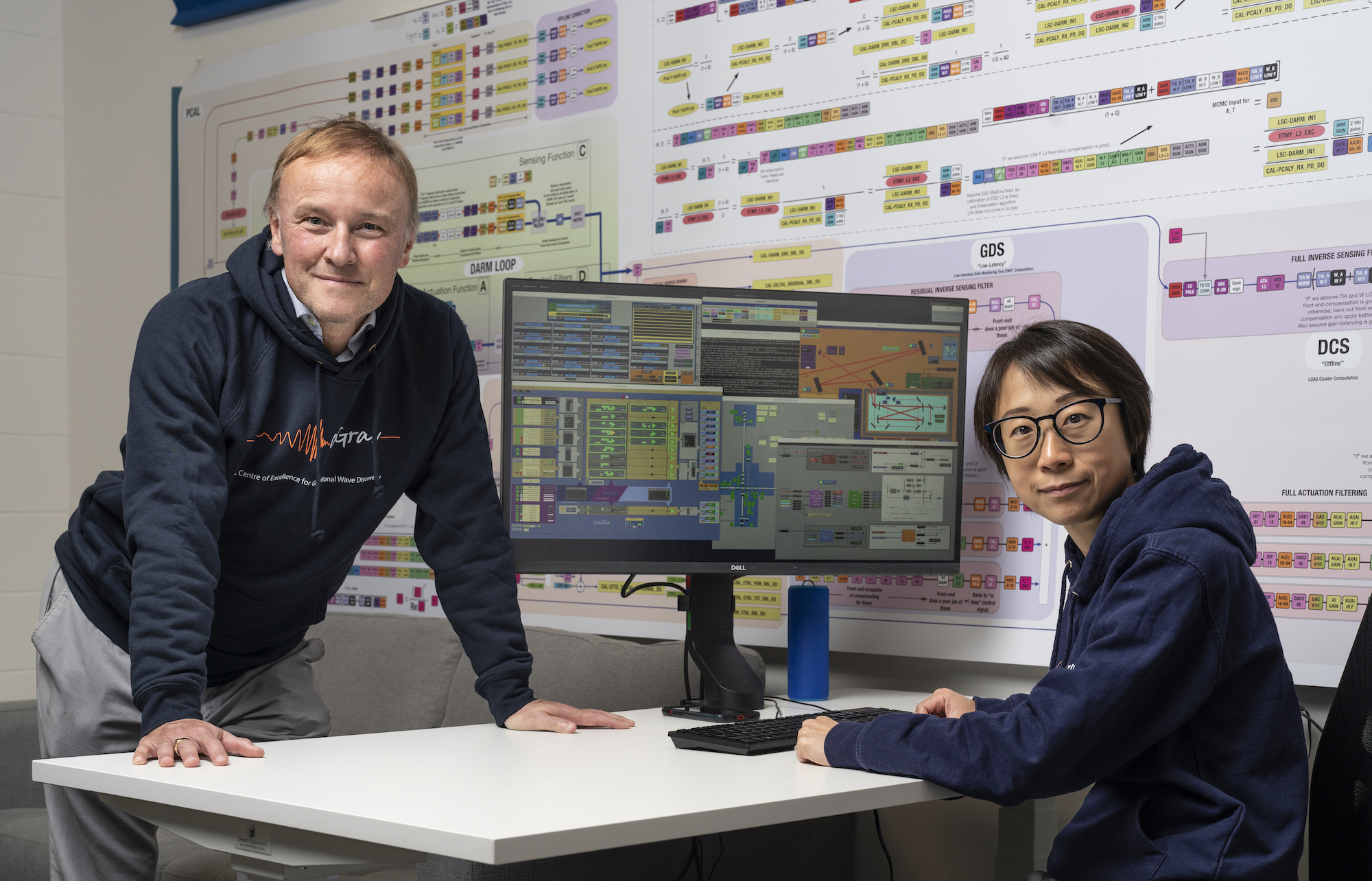CGA to boost the global hunt for gravitational waves
A new facility at The Australian National University (ANU) will help scientists detect some of the most extreme events in the universe and put Australia “front and centre” of the exciting field of gravitational wave science.
Gravitational waves are ripples in space and time, but they are weak and extremely hard to detect. It needs the cataclysmic collapse of a massive star or the merger of two extremely compact objects such as black holes or neutron stars for the waves to be detected on Earth.
When detected, these waves allow scientists to study some of the most hidden secrets of our universe, such as the moment the cores of massive stars collapse and the permanent distortion of space-time.
The new ANU facility will act as a remote control room for Laser Interferometer Gravitational wave Observatory (LIGO) in the United States (US) – one of the leading gravitational wave observatories on the planet — and play a major role in the latest global observing run, commencing today.
The LIGO remote control room is based at the Centre for Gravitational Astrophysics (CGA), the ANU node of the Australian Research Council Centre of Excellence for Gravitational Wave Discovery (OzGrav).
Dr Bram Slagmolen from CGA said the new ANU facility gives our scientists the ability to directly engage with the operation of the US-based gravitational wave detectors.
“This facility provides real-time information on the performance of the detectors, as well as notifications on detected events,” he said. “Researchers from ANU will be front and centre in LIGO’s latest observing run, helping monitor the detector, respond to any potential finds and troubleshoot any problems.”
Dr Lilli Sun from CGA said: “The detectors are extremely sensitive and have to be precisely calibrated before we can correctly extract the gravitational wave signals and decode the astrophysical information.
“The ANU LIGO remote control room creates a virtual environment for us to ‘sit at the detector,’ monitoring and understanding the response of the detectors in real-time, which is essential to accurate and precise calibration.”
The latest global observing run will also be boosted by the rejuvenated ANU 2.3-metre telescope, based at Siding Spring Observatory, which will join the ANU SkyMapper telescope in the global follow-up campaign.
The newly automated ANU 2.3-metre telescope can now respond to gravitational wave detections in minutes rather than hours, greatly helping our understanding of these extraordinary events. Associate Professor Chris Lidman, Director of Siding Spring Observatory, said: “Hunting gravitational waves and their optical counterparts is like finding a tiny object on the tip of the needle in a massive haystack. These new capabilities will make that task a little easier.”

Dr Slagmolen said that ANU scientists have contributed to tuning the two LIGO detectors to be ready for the latest observing run. This includes efforts towards control of the quantum state of light and calibrating the detectors to high precision.
“The LIGO detectors are at their highest sensitivity yet, and we are all excited to hear what the universe has to say,” he said.
Dr Sun said: “Australian universities and scientists have played a fundamental role in the hunt for gravitational waves for many years. The work we are doing here at ANU will provide a more powerful detection mode for gravitational waves than has existed ever before.”
Associate Professor Lidman said: “As the national university, we are proud to play a role in making sure the world benefits from our nation’s incredible talent and know-how and to also make sure Australia remains a leader in these global efforts.”
Published by ANU Media: https://reporter.anu.edu.au/all-stories/anu-to-boost-the-global-hunt-for...

